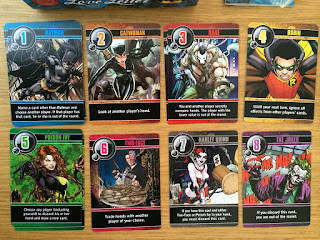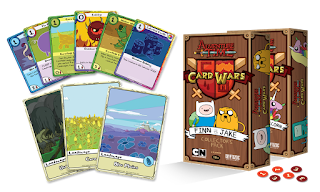Last weekend, I attended my Church's annual men's retreat. There, I heard Dr. Mike Metzger present a series of talks on leadership. The following is a summary; all quotes presented are from his talks or articles presented therein.
Talk 1- Return Authority
What makes leaders effective? We are perhaps used to a "top-down, directive" leadership style. A 'do as I say' mentality, focused on "getting others to do what you sense is needed; to have an impact; to make things happen." This leadership style, called "Imperial," values having power and influence. While that may have worked in the past, in today's world, we're seeing a profound shift in how effective leaders operate.
Today, effective people operate instead as "Interactive" leaders. Here, the focus is on "getting outcomes that make a difference for and with others; creating the conditions that engage everyone to achieve organizational goals." The Interactive leader values outcomes that make a difference.
In short, "interactive leaders return authority. They ask: Who is the authority here? In the workplace, it's practitioners closest to the work." They then ask many questions of those practitioners; in fact, returning authority means asking questions until you find out how much they want to know from you. It's NOT about telling people what they need to do.
What does this have to do with Christianity? We're called to love others, and often, Christians think they best show that by doing outreach. But outreach can be condescending. If you want to have influence, you have to be mixed in with the people- probably your immediate community- and you need to be interactive. Love people by not assuming anything; return authority and work with others rather than trying to bend them to your will.
Scripture: Genesis 1:26-28, 2:15
Talk 2- Build Mutuality
It is more blessed to give than to receive, and we're told to consider others more important than yourself. Interactive leaders, knowing this, seek to build mutuality. Building mutuality is about community and collaboration. It's "we," not "me." We have to speak people's language- using terms they understand- in order to do this. For example, the Biblical view of the world is summarized by four things:
- Creation - Fall - Redemption - Restoration
But if we use these terms, do people understand? Probably not. Use them if you want to be marginalized. But you can re-frame the way people view the Gospel by using 'street language':
- Ought - is - can - will
Not only do people understand words like this, but these four words help re-frame any problem we have in any area of our lives: What ought to be, what is, what can be done about it, and hoping for what the world will be. Seeking to help others will lead us to ask questions- with them- and work together towards a solution. And they may never even realize our approach is based on the Gospel.
"Interactive leaders build mutuality. They demonstrate emotional intelligence by asking these pracitioners, "How can we help?"
During this process, we'll all learn a lot, and the soul delights the most in what it learns indirectly- through self-discovery.
Scripture: Acts 20:35, Philippians 2:3
Talk 3- Complexity & Paradox
How do you make toast? The speaker opened with this exercise, and it's more complex than you think. You need bread (and the ingredients that constitute it), power, appliances, transportation, farming, and other things to make it all come together. The point? This world is complex.
Interactive leaders must wrestle with paradox and complexity. Paradox is an 'along-side truth'; two good, competing virtuous things (there may even be tension between them). Even the apostle Paul said: "I know in part." So don't assume; ask questions; LISTEN. Asking questions will reveal complexity, and in turn people will give you authority to build mutuality with them and collaborate on a problem. We can learn a lot from theories, but hands-on experience introduces us to unanticipated complexities impossible to exhaustively know (or document).
"Interactive leaders lead change by paradox and complexity. They only understand the complexity of problems because they first listen to practitioners."
Scripture: 1 Corinthians 13:9-12
Talk 4- Focus on Results
What's our end goal here? Results. Having influence means being a change agent- we are to change the world for the better as part of our role in restoring a distorted creation. Salvation includes redeeming the culture. In fact, we are called to 'dive in' to the culture and seek the flourishing of all. Two-thirds of the references in the Bible to the world are positive.
"Faith increases to the degree to which you love your neighbor- seek their flourishing. This is love. Loving God and others- the Great Command- means seeking the flourishing of your neighbor before yourself."
"Interactive leaders focus on results, fixing practitioner problems." We in the Church don't often take this approach today; we focus instead on building curricula or programs- most of which can be highly ineffective.
Scripture: Jeremiah 29, Luke 17:5-10, Colossians 1:18
Talk 5- [Sunday Worship Service]
What influences us the most- ideas, images, influentials, institutions, or items? The answer is institutions- they are reality-defining and boundary-forming.
Mike's Sunday message reiterated the above points and focused on a multi-layer diagram, roughly re-created below. Our left brains are narrowly-focused; our right, broadly vigilant. Too frequently, we focus exclusively on the left-side and forget about the broader view. This can lead us to thinking we know more than we do. We need outsiders looking across the board, to help us insiders in a given situation. The red text shows the four offices of Jesus; the green, ought-is-can-will; the purple, characters in King Arthur's legend. These things all map to this chart.
Thoughts
This was a very different series of talks- but it made sense, as Mike's vocation is 'solving problems by re-framing them.' At the end of the day, the point was this: to be a positive, welcome influence in people's lives, we need to love them. To love them, we need to interact with them, not assuming anything, to build mutuality, receive authority, and ultimately help society flourish. This approach is thoroughly Biblical, yet often ignored by Christians as we seek more "imperial" methods. It was a great retreat, and I'm glad to have attended. It's given me a lot to think about.


















